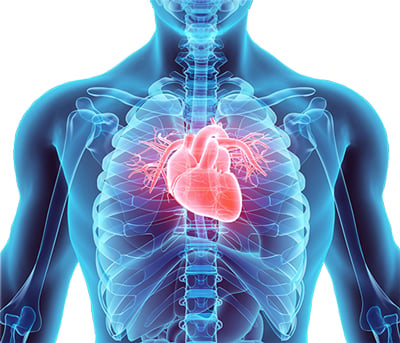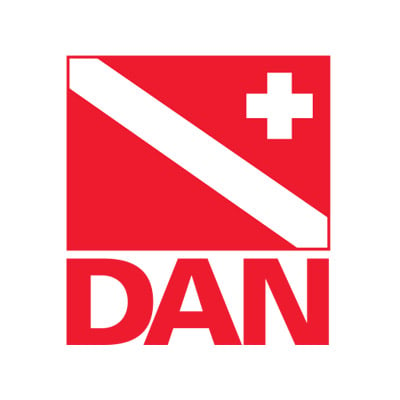A Hole In My Heart
DAN World shares a diver's alarming experience

I was on a trip with a group to dive the historic shipwrecks at Lake Huron’s Thunder Bay National Marine Sanctuary. The wrecks from the late 1800s rest nearly intact in 49 to 61 metres of icy cold and clear fresh water.
Our plan included two dives per day, all of which entailed mandatory decompression stops because of the depth and time we spent exploring each shipwreck.
Halfway through the trip, I began to feel itchy around my chest under my drysuit during a surface interval. I instantly had a bad feeling, as this was the third time I had felt this sensation in five years. I removed my suit and saw the telltale signs of skin bends: Red, blotchy, raised bumps indicating cutaneous decompression sickness (DCS) covered part of my upper left chest. I immediately told my group and started breathing 100 percent oxygen via my rebreather while lying still and resting on the boat. The itchiness and rash subsided within 30 minutes.
A diver in our group asked if I had been tested for a patent foramen ovale (PFO). His father, a cardiologist, had mentioned that repeated undeserved DCS is an indication to check for a PFO. A small hole between the two upper chambers of the heart lets blood pass from the right to the left atrium when you are in the womb, but after you are born and breathing on your own, the hole naturally fuses for most people. In about 25 percent of the population, however, the hole remains at least partially open but usually causes no ill effects. While the overall risk of DCS is low, it is higher in divers with a PFO.
I contacted DAN and provided my computer logs, but there was nothing remarkable about my dive profiles. DAN’s medical staff recommended that I have a bubble contrast test.
Within a few weeks I had my bubble contrast study, which involved injecting a syringe of saline solution and air bubbles into an arm vein to pass through my circulation system while performing an ultrasound of my heart. I did not need to wait for my results, as I could clearly see when the bubbles passed between my atria through the PFO. I was relieved to have a potential answer to the mystery surrounding my bouts with skin bends while my fellow divers doing the same dive profiles had no such ill effects.
Within a few weeks I had my bubble contrast study, which involved injecting a syringe of saline solution and air bubbles into an arm vein to pass through my circulation system while performing an ultrasound of my heart. I did not need to wait for my results, as I could clearly see when the bubbles passed between my atria through the PFO. I was relieved to have a potential answer to the mystery surrounding my bouts with skin bends while my fellow divers doing the same dive profiles had no such ill effects.
Within a few weeks I had my bubble contrast study, which involved injecting a syringe of saline solution and air bubbles into an arm vein to pass through my circulation system while performing an ultrasound of my heart. I did not need to wait for my results, as I could clearly see when the bubbles passed between my atria through the PFO. I was relieved to have a potential answer to the mystery surrounding my bouts with skin bends while my fellow divers doing the same dive profiles had no such ill effects.
The procedure is done using local anaesthesia while your heart is still keeping you alive. The surgeon inserts a nickel and titanium umbrellalike closure device through a catheter from a large vein in the leg up into the heart. It can sometimes be an outpatient procedure, but mine included an overnight stay in the hospital.
Six months after the closure, a follow-up bubble contrast test ensured the PFO was permanently shut, and I was cleared to return to diving.
Six months after the closure, a follow-up bubble contrast test ensured the PFO was permanently shut, and I was cleared to return to diving.
Read more from
DAN World
Divers Alert Network (DAN) is the world’s most recognised and respected dive safety organisation, having remained committed to the health and well-being of divers for 40+ years.


